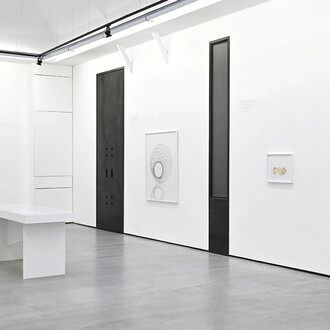While Rodin is widely known to the public as a sculptor, his drawings are, according to him, "the key to my work". The exhibition Rodin, Cut-outs presents to the public nearly two hundred and fifty drawings, ninety of which are characterized by the cutting and assembly of figures.
Playing with the spatial setting of these bodies, this process reveals audacious cut-out silhouettes and a dynamic of great modernity. This exhibition heralds one of the twentieth century’s innovative modes of expression.
"I have a great weakness for these little sheets of paper," Rodin confessed about his attachment to his drawn work. From the very beginning, Rodin - independently of his sculptures – often practices live drawing. His drawings are part of all the exhibitions dedicated to him, first in Brussels, Amsterdam, Rotterdam, The Hague in 1899, then in Paris in 1900, Prague in 1902 or in Düsseldorf in 1904. The museum preserves most of this drawn work, about 7500 sheets.
















